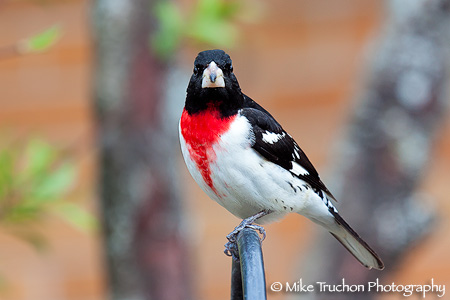By mid May, migratory birds are well on a northerly path from their winter to summer habitats with the culmination of International Migratory Bird Day on May 11, 2013 (typically the second Sunday in May). As a large variety of birds make stopovers to rest and refuel, there is ample opportunity to view these transitional birds that appear for a short time each year.
While refugees and preserves are ideal for viewing migratory birds, you may not have to go any further than your own backyard. Over the last week, in our backyard, we spotted many of different species of traveling birds in our trees, feeders and birdbaths. With minimal effort one can attract these and other non-migrating birds. Birds just require high quality seeds/suet and water. Afterwards, be patient and keep a vigilant, anything from an oriole to a warbler just might appear. With a little luck, a friendly pair might even build a home nearby. (All of these birds we photographed in our backyard over several days this year.)

A perched Rose-breasted Grosbeak stares straight forward. A glowing orange background with out of focus colored trees and light green leaves bring this bird’s plumage exploded to prominence.

One can almost hear this Scarlet Tanager chirp “look at me”. Sure to catch anyone’s attention, this elusive songbird flamboyantly exhibits its brilliant reddish orange plumage.

The dainty Tennessee Warbler is difficult to spot when fluttering in an apple tree in search of insects. Once it stops eating insects, the warbler’s eyestrip and yellow tinted feathers make it easy to identify.

A female Baltimore Oriole flaps her wings after landing on flowering branch. The sky blues and leaf greens are a striking contrast to her orange breast.

